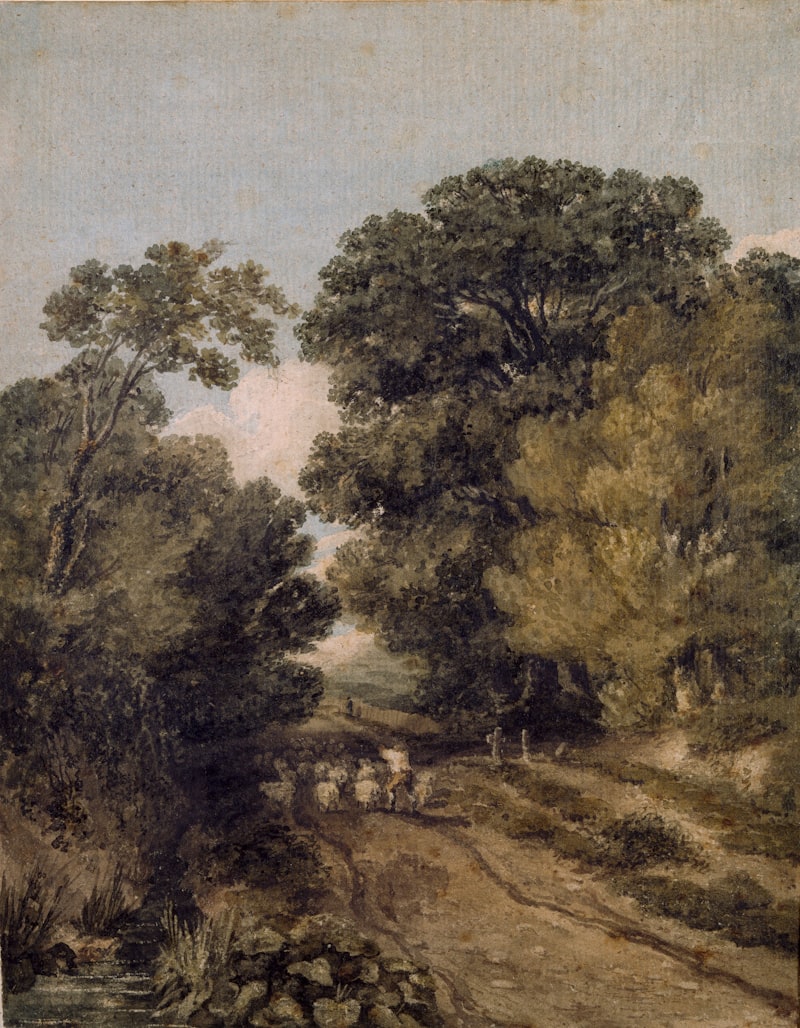One of the most enchanting destinations for experiencing European folk art is Transylvania, Romania. Here, amidst the dramatic Carpathian Mountains, villages like Maramureș and Sibiu preserve a kaleidoscope of traditions. Each house is a canvas, its walls adorned with vivid floral motifs and geometric designs, reflecting a deep connection to nature and folklore.
Venture south to Hungary, where the town of Hollókő stands as a UNESCO World Heritage site, showcasing traditional Palóc embroidery and pottery. Here, artisans skillfully weave intricate patterns into textiles, each stitch a testament to centuries of cultural heritage.
For a different perspective, head west to Portugal’s Alentejo region. Whitewashed villages like Arraiolos are famous for their exquisite wool carpets, handcrafted using techniques passed down since Moorish times. Each rug tells a story, blending Islamic, Jewish, and Christian influences into timeless designs.
Further north, in Sweden’s Dalarna province, the town of Mora epitomizes Scandinavian folk art with its iconic Dala horses. These wooden figurines, painted in vibrant hues of red, blue, and green, are symbols of Swedish craftsmanship and creativity.
In Greece, the island of Crete boasts a rich tradition of pottery-making. Wander through the picturesque village of Margarites, where artisans sculpt clay into intricate vases and amphorae, echoing the artistry of ancient Minoan civilization.
Whether exploring the intricate lacework of Belgium’s Bruges or admiring the vibrant papercut art of Poland’s Łowicz region, Europe offers a myriad of experiences for enthusiasts of folk art. Each corner of the continent reveals a unique chapter in the story of human creativity, where tradition and innovation intertwine to create timeless beauty.
Hidden Treasures: Unveiling Europe’s Most Enchanting Folk Art Villages
Imagine strolling through narrow cobblestone streets adorned with vibrant murals depicting ancient folklore. Each brushstroke on these walls breathes life into legends of heroes and mythical creatures, preserving cultural heritage in the most picturesque manner possible. It’s like stepping into a painting where every detail invites you to unravel its secrets.
One such gem is Hallstatt, nestled amidst the Austrian Alps like a fairytale village sprung to life. Its charming wooden houses adorned with intricate hand-painted motifs reflect centuries-old craftsmanship. Every doorstep seems to welcome you with its own unique tale, from tales of love and loss to triumphs over adversity.
Venture further into the heart of Romania, and you’ll discover Maramureș, a region where time-honored traditions thrive. Here, the villages themselves are works of art, with wooden churches adorned with elaborate carvings that tell stories of faith and resilience. The air resonates with the rhythm of traditional folk music, painting a vivid picture of a culture deeply rooted in its heritage.
Travel south to Portugal’s Alentejo region, where the walls of villages like Monsaraz and Marvão speak of a history shaped by Moorish and Roman influences. Whitewashed houses adorned with blue azulejos tiles create a striking contrast against the azure sky, evoking a sense of timeless beauty.
In Greece, the island of Crete harbors hidden gems like Margarites, where pottery has been a way of life since Minoan times. Here, artisans mold clay into intricate patterns passed down through generations, each piece a testament to the village’s enduring artistic spirit.
Journey Through Time: Exploring Europe’s Living Folk Art Museums
Imagine walking through cobblestone streets lined with quaint cottages, each one a testament to centuries-old craftsmanship. In these museums, you can witness artisans at work, skillfully weaving textiles, carving intricate wooden sculptures, or painting delicate ceramics. It’s like stepping into a living history book, where every exhibit tells a story of cultural heritage and artistic expression.
One of the most fascinating aspects of these museums is their interactive nature. Visitors can participate in workshops to try their hand at traditional techniques under the guidance of skilled craftsmen. Whether you’re shaping pottery on a potter’s wheel or learning the art of handloom weaving, these experiences offer a deeper appreciation for the craftsmanship of generations past.
Each museum is a treasure trove of folklore and tradition, preserving not just the artifacts themselves but also the stories and rituals that accompany them. From folk dances that echo through the halls to seasonal festivals that celebrate harvests and holidays, these museums capture the essence of community and identity.
Travelers seeking authenticity and cultural immersion will find these museums to be hidden gems worth exploring. They provide a glimpse into a world where art isn’t just for display but is a living, breathing part of everyday life. Whether you’re a history enthusiast, an art lover, or simply curious about different cultures, Europe’s living folk art museums promise an unforgettable journey through time.
Experience the magic of Europe’s living folk art museums for yourself and discover why these cultural treasures continue to inspire awe and admiration across generations.
Colorful Traditions: Where to Witness Vibrant European Folk Art Celebrations
Imagine strolling through the streets of Venice during Carnevale, where elaborate masks and costumes transform the city into a living canvas of color and intrigue. Each mask hides a story, a tradition passed down through generations, celebrating freedom and anonymity in a burst of creativity.
In Spain, the Feria de Abril in Seville is a testament to the country’s passion for life and community. Streets adorned with paper lanterns and vibrant papel picado banners create a festive atmosphere where flamenco music and dance echo through the night. It’s a celebration of springtime, of unity, and the enduring spirit of the Andalusian people.
Further north, in the Netherlands, the annual Flower Parade of the Bollenstreek showcases intricate floats adorned with millions of tulips, daffodils, and hyacinths. This floral extravaganza transforms the countryside into a tapestry of vivid hues, drawing visitors from around the globe to witness nature’s artistry in full bloom.
In Eastern Europe, the Krakow Nativity Scene Contest in Poland blends folk art with religious tradition, as craftsmen compete to create intricate nativity scenes using traditional paper-cutting techniques. Each scene tells a unique story, reflecting Poland’s rich cultural heritage and artistic craftsmanship.
Throughout Europe, from the Highlands of Scotland to the Mediterranean coast, folk art celebrations bring communities together in a riot of color and creativity. Whether it’s the intricate embroidery of Hungarian folk costumes or the lively rhythms of Portuguese fado music, these traditions remind us of the beauty in diversity and the power of cultural expression.
Join us on a journey through Europe’s colorful traditions, where every celebration is a testament to the human spirit and the enduring legacy of creativity. Experience the magic of vibrant folk art celebrations firsthand and discover the stories that color the continent’s cultural tapestry.
Off the Beaten Path: Discovering Authentic Folk Art Experiences in Europe

When traveling through Europe, beyond the bustling cities and famous landmarks lie hidden gems of authentic folk art experiences waiting to be discovered. These off-the-beaten-path destinations offer a glimpse into centuries-old traditions and artistic expressions that are often overlooked by mainstream tourism.
Imagine wandering through the quaint villages of Romania’s Maramureș region, where intricate woodcarvings adorn every corner, telling stories of local myths and legends. Here, craftsmen pass down their skills through generations, creating handmade treasures that reflect the soul of their community.
In Portugal, the Alentejo region beckons with its vibrant pottery scene. Far from the tourist crowds, you can visit workshops where artisans mold clay into stunning azulejos (hand-painted tiles) or delicate ceramics, each piece a testament to the region’s rich cultural heritage.
For a truly immersive experience, head to Poland’s Podhale region, nestled in the Tatra Mountains. Here, you can witness the art of łowiczanka, intricate embroidery that adorns traditional clothing worn during festive occasions. The patterns and colors used tell stories of resilience and identity, offering a glimpse into the heart of Polish mountain culture.
In each of these European destinations, the beauty lies not only in the art itself but in the stories and traditions woven into every piece. These experiences invite travelers to connect with local communities, fostering a deeper appreciation for the craftsmanship and creativity that have shaped these cultures over centuries.
Next time you plan your European adventure, consider veering off the well-trodden path to uncover these hidden treasures of folk art. Whether you’re captivated by handmade pottery, mesmerized by woodcarvings, or intrigued by intricate embroidery, Europe’s lesser-known artistic gems promise an unforgettable journey into the heart of cultural heritage.
This article aims to evoke curiosity and highlight the richness of lesser-known folk art traditions across Europe, encouraging readers to explore beyond the typical tourist attractions.
Masterpieces in the Countryside: Rural Europe’s Rich Folk Art Heritage
Imagine wandering through quaint villages where every corner reveals intricate wooden carvings, vibrant tapestries, and whimsical pottery. These artworks, passed down through generations, reflect the deep connection locals have with their land and history. It’s like stepping into a living museum where the past comes alive through art.
Take, for example, the rolling hills of Provence, France, dotted with ancient stone cottages adorned with colorful Provencal fabrics and hand-painted ceramics. Each piece tells a tale of Mediterranean warmth and a timeless artistic tradition that has endured for centuries.
Further east, in the heart of Romania, the rural landscape is adorned with intricately carved wooden gates, a symbol of hospitality and protection. These gates, known as “Poarta lui Iovan” in Romanian, are not just functional but are celebrated as symbols of local identity and craftsmanship.

Traveling north to Scandinavia, one encounters the stunning simplicity of Swedish Dala horses, carved from wood and painted in bright colors. These charming figurines, originating from the Dalarna region, are beloved symbols of Swedish folk art, each telling a story through its unique design and craftsmanship.
The richness of rural Europe’s folk art heritage lies not only in its aesthetic beauty but also in its ability to preserve cultural identity and traditions. Every piece, whether a handwoven tapestry from Portugal or a delicate porcelain figurine from Hungary, speaks of a community’s creativity and resilience in preserving its heritage.
In exploring these masterpieces, one discovers more than just art; they uncover the soul of rural Europe itself, where creativity meets tradition in a celebration of the everyday. It’s a journey through landscapes and narratives, where each artwork invites you to delve deeper into the cultural tapestry of Europe’s countryside.
From Hungary to Portugal: Top Destinations for Immersive European Folk Art
Hungary, with its vibrant folk art traditions, beckons travelers with its intricate embroidery, colorful ceramics, and lively dance festivals. Step into Budapest’s bustling Great Market Hall, where stalls overflow with handcrafted treasures that reflect centuries-old craftsmanship. Imagine the delicate floral motifs adorning traditional Hungarian dresses or the rhythmic beats of folk music echoing through village squares during festive celebrations.
Venture westward to Poland, where Krakow’s UNESCO-listed Old Town serves as a living canvas of Slavic folklore. Wander through the Rynek Główny, Europe’s largest medieval square, where artisans carve wooden sculptures and weave intricate patterns into vibrant tapestries. Discover the magic of Polish papercutting, known as wycinanki, where every meticulously cut design tells a story of resilience and artistic prowess.
Further south, Romania’s Transylvania region offers a glimpse into the mystical world of Romanian folk art. Explore the painted monasteries of Bucovina, adorned with frescoes depicting biblical scenes and local legends in vivid detail. Delve into the intricate woodcarvings of Maramureș, where skilled craftsmen transform ancient traditions into timeless pieces that captivate the imagination.
Crossing the Carpathian Mountains, Slovakia welcomes travelers with its unique blend of folk architecture and folk art. Visit the open-air museum of Čičmany, where whitewashed houses adorned with geometric patterns evoke a sense of harmony with the natural surroundings. Experience the joy of Slovak folk dances, where each step tells a story of community and cultural pride.
Finally, our journey concludes on the sunlit shores of Portugal, where the art of azulejos, intricately painted ceramic tiles, adorns the streets of Lisbon and Porto. Lose yourself in the rhythm of Portuguese fado music, a soulful expression of longing and love that resonates through centuries-old neighborhoods.
From the heart of Hungary to the coast of Portugal, each destination invites you to immerse yourself in the timeless beauty of European folk art. Whether you’re drawn to the intricate patterns of Hungarian embroidery or the soul-stirring melodies of Portuguese fado, these cultural treasures await, ready to awaken your senses and inspire your wanderlust.
Frequently Asked Questions
How can I find authentic folk art experiences while traveling in Europe?
Discover authentic folk art experiences in Europe by visiting local festivals, artisan workshops, and museums dedicated to traditional crafts. Engage with local communities through cultural tours or seek recommendations from locals for immersive, genuine encounters.
What are some must-visit museums and cultural centers for European folk art?
Discover must-visit museums and cultural centers across Europe showcasing folk art traditions. Explore rich displays of regional crafts, textiles, and artifacts at institutions like the Museum of Folk Architecture and Life in Lviv, Ukraine, and the Museum of European and Mediterranean Civilizations in Marseille, France. These venues offer immersive experiences into Europe’s diverse cultural heritage through vibrant exhibits and interactive displays.
How can I participate in folk art workshops or festivals across Europe?
Learn how to participate in folk art workshops or festivals across Europe with our concise guide. Discover the steps to register, find events, and immerse yourself in cultural experiences.
What are the top destinations in Europe for experiencing traditional folk art?
Discover Europe’s top destinations for experiencing traditional folk art with our concise guide. Learn about vibrant festivals, artisan workshops, and cultural hubs across the continent where you can immerse yourself in authentic folk traditions.
Which European countries are known for their vibrant folk art traditions?
Discover which European countries boast vibrant folk art traditions. Explore unique cultural expressions from countries like Hungary, Romania, Poland, and Norway, each known for their rich tapestries, intricate embroidery, and colorful ceramics.



